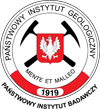The word "Precambrian" means "before the Cambrian" as it refers to rocks predating the Cambrian period. The term was popularised by Charles Darwin in his book "On the Origin of Species". The Precambrian lasted for about 4 billion years—nearly 90% of Earth’s existence —ending with the so-called "Cambrian Explosion". It is divided into three eons: Hadean, Archean, and Proterozoic.
Hadean 4.6 - 4 billion years ago
It’s the oldest period of the Earth’s history: it includes the formation of the Earth itself and its moon. For much of the Hadean, the Earth’s surface was covered by lava. By the end of the eon first minerals and rocks had formed. The atmosphere was mostly composed of a mixture of volcanic gases and some water vapour, and it lacked oxygen.
Archean 4.0 - 2.5 billion years ago
During the Archean, first oceanic crust and later the first micro-continents were formed. When temperatures started to drop, water vapour began to condense, leading to the formation of seas and oceans. The first oxygen in the atmosphere was a product of photolysis (light-driven breakdown of water molecules into hydrogen and oxygen). About 3.7 billion years ago, one of the first recorded living organisms — blue-green algae (cyanobacteria) — began to photosynthesize and pump more oxygen into the atmosphere.
Proterozoic 2.5 billion - 541 million years ago
At the start of the Proterozoic, increased levels of atmospheric oxygen led to the formation of the ozone layer. In the shallow seas at the continental margins, early life flourished: stromatolites became a common sight on submerged shelves, with the first organisms containing a nucleus (Eukaryotes) appearing about 2.1 billion years ago. Traces of the first multicellular life also come from the Proterozoic.
Paleogeography
The early continents of the Archean were small. With volcanism weakening about 2.5 billion years ago, the crust became thicker and more stable. It was probably when the tectonic movement, similar to the one happening today, started. The collisions of the microcontinents paved the way for the formation of the first mountain ranges. Around 2 billion years ago, the existing landmasses came together to form the first known supercontinent, Columbia, which broke apart about 1.5 billion years ago. At the end of the Precambrian, the continental blocks reunited two more times: with the supercontinent Rodinia, between 900 and 600 million years ago; and Pannotia, just before the start of the Cambrian.
Climate
Thanks to the isotopic studies of rocks, we can determine the temperatures prevailing in prehistory. For much of the Hadean, the surface of the Earth was in a liquid state, so its temperature must have exceeded 1000°C. As time passed, the Earth cooled, and the temperature gradually decreased. At the end of Hadean, it reached about 200°C, falling to about 50°C in Archean. At the start of the Proterozoic, the first global glaciation happened. Another similar event took place about 600 million years ago, right before the end of the Proterozoic. At that time, almost entire planet froze in an event nicknamed “Snowball Earth”.
Do you know that...
The age of the Earth was estimated in 1956, based on dating meteorites, like the Canyon Diablo meteorite.
















